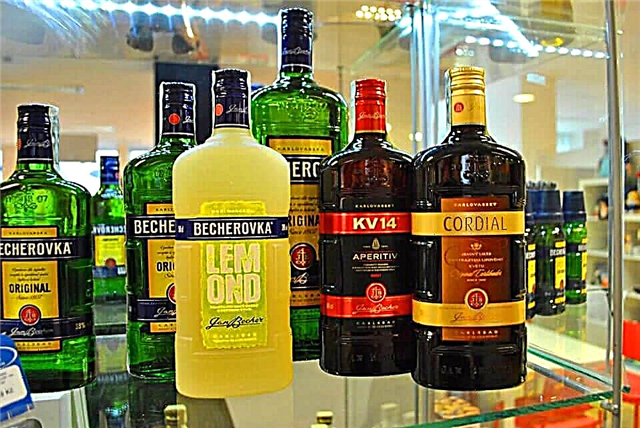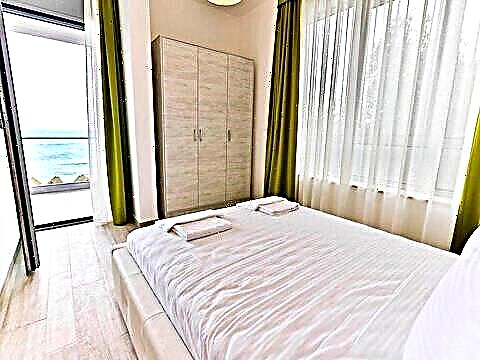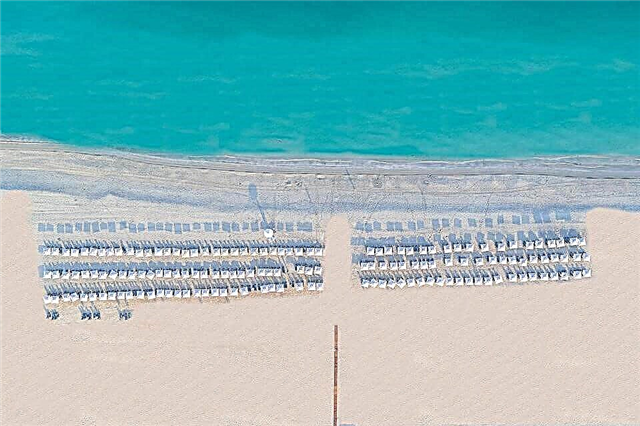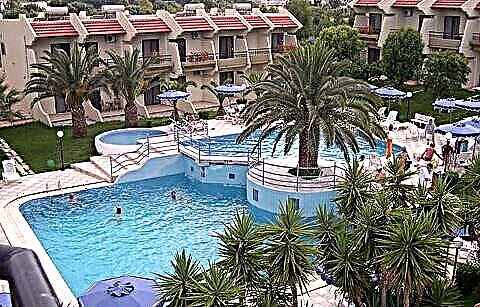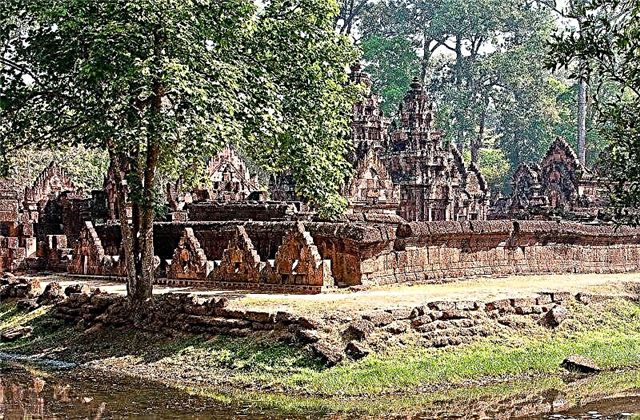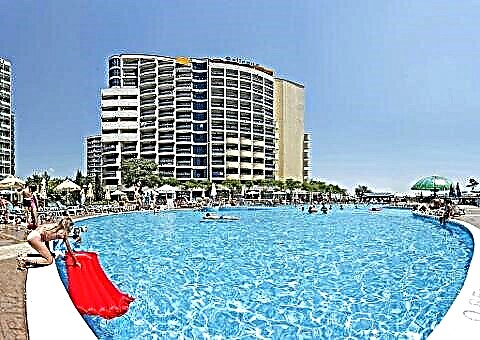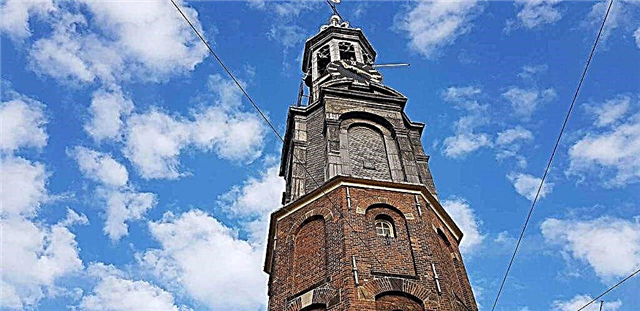Amsterdam is amazing and controversial. Some believe that tourists here at every step are waiting for debauchery, half-naked female bodies in the legendary windows, and clouds of fragrant narcotic smoke. In fact, it is an atmospheric European city with colorful streets, tulip fields, idyllic canals and, of course, legendary paintings by Van Gogh. Lovers of entertainment will surely not pass by Leidseplein. Romantic fans and aficionados of flowers - the beautiful market and the Keukenhof park. And, of course, connoisseurs of traditional excursions will not be left out. The Museum Quarter, with its many displays and exhibitions, is an ideal place to satisfy your cognitive interest. We will tell you about the main attractions of Amsterdam, where to go and what to see.
Keukenhof

Holland is famous all over the world for its ability to grow vegetables and flowers, produce elite seeds. The most famous flowers here are tulips, a kind of symbol, a visiting card of Holland and Amsterdam. Keukenhof - a park of flowers - is 38 hectares of incredible flower beauty and amazingly designed artificial landscapes. Those who come here for the first time fall into an emotional stupor from the huge number and enchanting variety of colors. All kinds of tulips you will not see here: from miniature to huge in size, the most fantastic colors and tones.

The entire territory of the amazing park is an original flower arrangement of various shapes and colors that fit well between trees and water bodies. Lilac, pink, bright yellow, scarlet, purple tulip meadows of various configurations create a truly fabulous sight. Flowerbeds and lawns in the form of stars, ovals, circles, rectangular stripes amaze with fantastic beauty. It is doubly pleasant to know that this flower fairy tale was created by the imagination and hands of florists-designers.
Sculptors also did a good job here - among the floral compositions there are funny animal figures in unexpectedly interesting interpretations. Every year, the park hosts international exhibitions-seasons of tulips, when the main flower panorama is prepared every year by different countries. Russia also takes part in them under the slogan "Russian Season" and adequately demonstrates the high art of floristry and floriculture.
A ticket to the Keukenhof park costs 14 Є. You can buy it on the park's website or on the bus that takes tourists to Keukenhof.
Amsterdam city card for 24, 48, 72 or 96 hours - from 60 €
Public transport ticket - from 7.50 €
Holland Pass: Amsterdam and Holland - 40 €
Public transport and hop-off boat ticket (24 hours) - 32.50 €
Leidseplein

Leiden Square (Leedsplein) is a recognized center for evening and nightlife. It (the square) is located in one of the busiest places in Amsterdam, in the northeast of the Singelgracht canal, at the intersection of 3 streets. This area is teeming with restaurants, bars, boutiques, shops, theaters, dance clubs, cafes and other entertainment venues. During the day, the square is full of people relaxing in cafes, bars, walking along sidewalks, shops and stalls.
In the evening, it is colored with hundreds of lights of all sorts of shades, turning into a continuous fireworks display. Thousands of Amsterdam citizens and tourists come here to have fun in coffee shops, attend theater performances, and watch a variety of shows.

What establishments of Leiden Square attract crowds of people here, who, like moths to the light, clog the Leidseplein space to overflowing. Very popular with young people is the Bulldoq Palace coffee shop, ironically open in a former police station, where thrill-seekers can smoke Amsterdam-legal marijuana, relax, have a drink and a snack. It has its own, non-traditional menu, including, for example, hashish cakes. Inexperienced visitors should not come here, except to see the arrangement of such a specific institution (there are about 1,000 of them in Amsterdam).

On Leidseplein there are box offices where you can buy tickets for any performance or concert in all theaters in the city. In one corner of the square there is a neo-Gothic castle, which houses the Stadsschouwburq theater. His repertoire includes dramatic performances and musicals, which are eagerly attended by the audience. At the opposite end of the square there is another building that looks like a castle. It houses the "American Hotel", known for the wedding of the famous spy Mata Hari and bohemian life.
Not far from the hotel there is another Boom Chicaro theater, which hosts comedy shows. The streets adjacent to the square are filled with all kinds of shops, pastry shops, bistros and other commercial establishments. They offer a huge variety of products. In the neighboring lanes, there are nightclubs, casinos, rock establishments, among which is the legendary Paradiso club, where in 1995 the famous duo Rolling Stone gave a concert, tickets to which cost thousands of dollars. The picturesque city park Vondelpark is located in the vicinity of Leidseplein.
Van Gogh Museum

The modern building of the modern type is a tribute to the memory of the brilliant artist who received worldwide recognition only after his death. Van Gogh lived a short life (37 years), he began to seriously engage in painting at the age of 31 and in 6 years created as many canvases, drawings and sketches as many artists have written over many years. An extraordinary, controversial, mysterious painter left to the world more than 800 paintings, about 450 drawings and more than 1,000 sketch sketches. According to the testimony of his biographers, the artist, in addition, generously distributed his works to visitors to taverns, who for the most part could not adequately appreciate the talent of Vincent Van Gogh and did not keep the drawings.

The preservation of the artistic heritage of the great genius of the brush is the merit of the widow of his younger brother Theo, and her son, It was they who contributed to the popularization of creativity, worthy of invaluable society during the life of the artist. In 1926, all of the artist's masterpieces were transferred to the Amsterdam City Museum, where they remained until 1973, and then transferred to the newly opened museum. All works are presented in 4 thematic sections in accordance with the periods of creativity. In addition to the works of Van Gogh, the museum exhibits canvases by his other prominent contemporaries: Picasso, Monet, Toulouse-Lautrec, Manet and others. In addition, there are personal belongings of the genius and letters addressed to his younger brother.
Rembrandt Museum

The most interesting tourist attraction is the Rembrandt House-Museum, where you can visually see not only the priceless art canvases of the great Dutchman, but also the environment where he lived for 17 years. Now it is difficult to imagine that such a genius, whose paintings are considered unsurpassed masterpieces, went bankrupt, and all the property was sold at auction. Thanks to the preserved detailed inventory of the items sold at the auction, it was possible not only to collect everything, but also to completely recreate the living environment of the artist's house.
The Rembrandt House Museum was officially opened by Queen Wilhelmina on 10.06.1911. The museum was created by the collective efforts of artists and patrons of art who donated engravings, paintings, pieces of furniture, returning them to their original place. Particular credit goes to the honorary board member Harsten, who donated money for the purchase of the building and for the purchase of paintings. Many donated their items free of charge: Warburg from New York was the first to present an early Rembrandt engraving "Saint Jerome at the Clipped Willow", 6 engravings were donated to Israel, 11 donated to the Rijksmuseum from his collections.So, over the course of decades, the Rembrandt house-museum acquired a modern look, identical to what it had during the life of the brilliant artist.

Based on the numerous exhibits, one can conclude about Rembrandt's hobbies for collecting weapons, ancient military equipment, ancient tomes. The museum presents the master's working accessories: brushes, paints, scrapers, containers for mixing paints. It seems that the artist has moved away from them for a while and will soon return to continue creating.
National Maritime Museum

There is nothing surprising in the fact that the Maritime Museum is located in Amsterdam, no. Where, if not here, in the capital of the sea power, should he be? The entire history of Holland is associated with seas, ships, pirates. And the building for such a museum was chosen the most suitable, built in the 17th century for the warehouse of the Dutch Navy according to the project of Stalpaert.
The monumental structure, outwardly reminiscent of a majestic ship, perfectly reflects the status of Amsterdam as the most powerful port of the world at that time. The National Maritime Museum was opened in 1973, becoming a significant object of the country's history and culture.

The expositions and exhibitions of the museum illustrate in detail the 500-year history of Dutch maritime shipping. A real ship is moored at the pier in front of the museum (it stands on the water), outwardly similar to the legendary sea vessel "Fast Indiaman", which sank on the first voyage (1749). The museum displays inside exhibit ancient artifacts of navigation, models of various ships, maps, anchors, diaries, steering wheels.
Special exhibitions for children have been launched, demonstrating, for example, whale hunting, work in the port. Here you can become a participant in a virtual voyage on a ship together with famous sailors of the past, experience rolling during a storm and take part in a sea battle.
Rijksmuseum

In a huge brick building with a peaked roof, occupying an entire block, there is the State Art Museum - Rijksmuseum. The massive building was designed by the architect Kuipers (1876-1885) with an ever-increasing number of exhibits in mind. The museum collections provide a broad overview of the development of Dutch art from the 15th century to the present day. The largest collection is a collection of paintings by Dutch artists, among which the pearl is the famous painting by Rembrandt, illustrating the Golden Age of the state - "Night Watch". It is located on the 2nd floor in the "Gallery of Fame", where hundreds of people come to see the artistic masterpiece.
There are many paintings by other Dutch artists - contemporaries of Rembrandt: Hals, Steen, Vermeer, etc. - magnificent examples of easel art. The variety of genres is amazing: religious subjects, individual and group portraits, scenes of everyday life, seascapes, still lifes, nature in all its manifestations. In addition to paintings, sculptures made of wood, bronze and marble, jewelry, tableware and other exhibits are exhibited here.
Street red-light district

The famous Red Light District is actually a whole district of Amsterdam, where hot spots like coffee shops, porn shows, sex shops and paid sex establishments are everywhere. The special flavor of these places attracts crowds of tourists eager to see with their own eyes the peculiarities of a street that is atypical for other cities. In lighted showcases, naked beauties lure with their frank appearance, everything around breathes with carnal passion. During the day, these quarters are interesting for the ancient buildings of medieval architecture, in which the establishments are located, the opportunity to sit in cozy cafes with a cup of coffee, ride a boat along the canals.

There have already been several attempts to close the Red Light District, but each time the decision provokes a violent protest from "moths" and brothel owners. Now the municipality has bought part of the brothels and gave them for free use to designers who have opened fashion boutiques in them.
Hermitage on the Amstel

The world famous Hermitage of St. Petersburg has its own branch in Amsterdam, which exhibits collections that cannot be accommodated in St. Petersburg. After the closure of such branches in London and Las Vegas, the Hermitage was opened in the capital of Holland, where a lot is connected with the Russian reformer tsar Peter I. There were also family ties between the thrones of states: King Willem II of the Netherlands was married to the daughter of Emperor Paul.
The management of the Amsterdam Hermitage (director Ernst Wen) organizes temporary exhibitions of exhibits brought from the storerooms of the St. Petersburg museum. According to the agreement, exhibits from other museums should not be shown here: 1 euro of the cost of the entrance ticket goes to the account of the Hermitage in St. Petersburg.

The Dutch government paid a high honor to the Russian museum pearl by granting the collections the old classical building Amstelhof (1683), the façade of which became the longest in Amsterdam. Once it housed a shelter for elderly women, but later it lost its purpose due to inconsistency with modern requirements. In 2009, 3 architectural firms were engaged in the restoration of Amstelhof, renovating the interiors, facade and area around the building, turning it into a wonderful historical, architectural and museum monument at 51 Amstel. To visit 1 exhibition, you need to pay 15Є.
Artis Zoo

"Nature is the mentor of art" - this is the translation of the name of the very first zoo in the city, founded in 1838 by famous zoologists of the Netherlands. From the very beginning of its existence, the zoo's management has sought to house rare species of animals and birds, among which was the quagga zebra, the last specimen of an ancient extinct species of African zebras. In addition to representatives of the fauna, the "Artis" houses the Planetarium, the Zoological and Geological Museums, which makes it not just a spectacular institution, but a real scientific and educational center.
Visitors can see here a pygmy donkey, alpaca, a rare animal Vantussi, Japanese macaques. The territory has an extremely interesting thematic design of the zones: a camel lawn, a parrot alley, a monkey rock, a children's farm, an aquarium, a gallery of predators, bird and reptile pavilions. Inspection of the zoo - an extramural journey across the planet of fauna.
Royal Palace

This is one of the 4 Palaces placed at the disposal of the current reigning Queen Beatrix, where she holds receptions and various ceremonies. The gray multi-storey building was erected as a city hall in the Dutch Golden Age as a symbol of the kingdom's power and grandeur in the 17th century. Despite the external gloomy simplicity of the huge building, it is the personification of luxurious decoration and rich interior design.

An example of this is the Central Hall, on the marble floor of which 2 maps of the world are depicted with designations on the hemispheres of the places of the colonial presence of Holland. Magnificent paintings adorn the halls of the Palace, among which was the largest painting by Rembrandt, "The Oath of Claudius Civilis" (the leader of the Batavian tribe against Rome). Unfortunately, the canvas has not survived in its original form; a fragment of it is now in Stockholm. The impressive size of the building, which for many years has been the largest administrative building in Europe, allowed it to claim the title of the 8th wonder of the world. Now the Palace is readily visited by townspeople and tourists.
Diamond Museum

This museum is a vivid testimony to the talent and hard work of the Dutch, not only experts in marine shipbuilding and the cultivation of elite plants, but also excellent masters of fine diamond cutting. The famous jewelry company Koster Diamonds, which turns nondescript stones into dazzling diamonds, gave rise to the creation of the Diamond Museum. The global merit of the company is the efficient use of steam in the processing of stones, therefore the museum and the factory are located in one building as a whole.
Having admired the iridescent shine of a variety of diamond jewelry, having listened to interesting legends and real stories about legendary stones, you can go directly to the factory workshops. Here you can get a complete understanding of the process of turning diamonds into the most expensive gems in the world. Anyone who speaks English and Dutch has the opportunity to watch a film about the history of diamonds and their cutting.

The exhibits of the museum are products of incredible beauty, real works of art made in different parts of the world. Among them is the famous diamond-encrusted tennis racket, which is awarded as a prize to renowned tennis players. There are also copies of famous works, for example, a silver skull of a monkey, all covered with diamonds; painting (copy) "Starry Night" by Van Gogh, with a scattering of diamond stars. Here you can see the products of famous jewelry houses of the world (Tiffany, Graff, Mikimoto and others).
NEMO Museum

Who has not admired the romantic image of the fictional, but such a real hero J. Verne ?! Who was not struck by the ingenious insight of the great science fiction writer who predicted the appearance of a submarine, when there was still no hint of it ?! Anyone who is familiar with Verne's legendary book "Twenty Thousand Leagues Under the Sea" and is fond of scientific experiments, considers it necessary to visit the NEMO Museum.
The museum is located in an unusual-looking building that looks like a fantastic ship. In fact, this is a scientific and entertainment center, intended primarily for children and young people. The purpose of creating such a center is to foster interest in science and technological processes among the younger generation. Such an original design of the building was developed by the renowned master of the high-tech style of architecture Renzo Piano. In 1997, Queen Beaktrice inaugurated the new Museum after 6 years of construction.

The design of the center uses analogies with the famous novel: the halls are like decks showing various devices. Here the secrets of various technologies, genetics, biochemical and economic processes are revealed. Each floor of the 4-storey building has a specific theme of scientific experiments conducted in the form of shows, entertaining games, competitions and serious scientific experiments. The museum attracts thousands of children from many European countries.
Canals of amsterdam

It is no coincidence that Amsterdam is called the Venice of the North. The capital of Holland is related to the legendary city on the water not only by this poetic comparison, but also by the numerous canals encircling the Old Town with four concentric semicircles. All this splendor is complemented by over 1,500 bridges and 90 islands. All channels are artificial. The first was dug Singel - not for the sake of beauty, but primarily in order to develop trade and "maritime" communications of the country. It is not surprising that it quickly became the center, and in the Golden Age of Holland, it was here that the nobility settled.
Many of the buildings of that time have survived to this day - today they are the "face" of the city's architectural ensemble. Further, the city was "surrounded" by Herengracht, Keizersgracht and Prinsengracht - along them there are many luxurious mansions, erected later. Walking along the canals is something without which an excursion program in Amsterdam is simply unthinkable. This pleasure costs about 16-20 euros, depending on the organizing company. In order to save money, you can buy a combi-ticket, which will also include a visit to a museum. Local agencies offer enough options, you can always find the right one.
4-course dinner cruise - 79 €
Evening pizza cruise - 39 €
Canal boat cruise with open top - 13 €
Canal walk - 13 €
1.5-hour evening canal walk - 19.50 €
Meyderslot Castle

Holland is an amazing country where a variety of architectural masterpieces coexist on a small area. Not far from the city, there is a beautiful medieval castle Meyderslot - majestic, mysterious and inaccessible. The first mention of it dates back to 1280. However, it is likely that the history of the fortress began much earlier.
In any case, the 13th century is the heyday of the castle. In those days, it was a place for collecting trade duties. By the end of the century, the owner was killed and the castle fell into ruin. In the 1370s, restoration work began. In the Middle Ages, the castle was repeatedly "passed from hand to hand", completed and restored. In 1895, it was transferred to the state and turned into a branch of the state museum. Today, collections of weapons and portraits remind of the affairs of bygone days.
The opening hours of the castle depend on the season. In summer, from April 1 to October 31, its doors are open from 10-00 to 17-00 on weekdays and from 12-00 to 17-00 on Saturdays and Sundays. In winter, guests are accepted only on weekends, from 12-00 to 17-00. The cost of the entrance ticket is 15.5 euros for adults, 9 euros for children aged 4 to 11 years old, free of charge for children under 3 years old. You can get to the castle by buses №№320, 322, 327 - they all leave from the Central Station.
Dam Square

Dam Square is the historical center not only of the city, but of the whole of Holland. It is not surprising that the life of a country located below sea level has always been associated with water. So the main square is a dam, built in the 1270s and connecting the two banks of the Amstel River. Gradually, it grew, turning into a mooring place for merchant and fishing vessels. Together with them, a fish market was formed on the square, the fame of which "scattered" all over Europe.
Over the years, the appearance of the square has changed - it reflected almost every historical event, one way or another related to Holland. Only one thing remained unchanged - the majestic harmonious appearance and the "central" status. Getting to Dam Square is not difficult - the nearest stop, which is called Dam, is just a few steps away.
Madame Tussauds museum

Madame Tussauds is one of the branches of the famous London Wax Museum. During his visit, you can meet face to face ”with Van Gogh, Rembrandt, Pablo Picasso, Salvador Dali, as well as contemporary celebrities - Madonna, Michael Jackson, Merlin Monroe, Angelina Jolie, Brad Pitt and many others.
Getting to Madame Tussauds is not difficult - it is located on Dam Square, not far from public transport. The exposition is open daily from 10-00 to 21.00. The ticket price is 23.5 euros. When buying online, there is a discount - you can order a ticket on the website for 19.5 euros.
Tickets to Madame Tussauds and Amsterdam Dungeon - 30 €
Heineken Experience ticket - 18 €
Stedelejk

The City Museum, or as it is often called Stedelejk, is one of the most famous and popular in the city. His collection contains paintings by world famous artists - Pablo Picasso, Claude Monet, Marc Chagall and even Kazimir Malevich. The latter is associated with a lot of litigation and litigation, and, alas, 5 out of 34 significant paintings in 2008 were transferred to the heirs and "scattered" in private collections. The collection of the City Museum presents a lot of works by contemporary artists in different styles - pop art, video art, povet art and others.
Until 1972, visitors could also enjoy the extensive collection of Van Gogh's paintings. Later they all moved to their own building. The City Museum is located in the Museum Quarter, at Museumplein, 10. You can get to it from the center by trams No. 2, 5 or buses No. 170, 172. The exposition is open daily from 10-00 to 18-00, on Fridays - until 22-00. The cost of the admission ticket for adults is 17.5 euros, for students - 9 euros. Children under 18 can visit the City Museum for free.
Anne Frank House Museum

To understand why the Anne Frank Museum is so popular, you need to “turn over the pages” of the history of Holland and focus on one of the saddest, the name of which is World War II.Anne Frank was an ordinary 13-year-old girl who, according to the German occupiers, was not lucky - she was born into a Jewish family. Only because of this, Anna for two years, together with her loved ones, was forced to hide in a shelter in the very house where the museum named after her works today. Unfortunately, the girl never saw the end of the war - she died in the Belsen camp. The main exhibit of the museum is Anna's diary. The exposition also includes photographs, furniture, personal belongings, the office of the father of the family has been completely restored.
The museum is located a 20-minute walk from the Central Station - in the historic center of Amsterdam. Nearby there is a tram stop, through which routes No. 13, 14, 17 pass. During the "tourist season", from April 1 to November 1, guests are welcome here every day from 9-00 to 20-00. From November 1 to April 1, the schedule changes, from Monday to Friday the museum is open from 10-00 to 20-00, on Saturday - from 9-00 to 22-00, on Sunday - from 9-00 to 19-00. The entrance ticket for adults is 9.5 euros, for children from 10 to 17 years old - 4.5 euros. Children under the age of 10 can visit the exhibition free of charge.
Oudekerk Church

Oudekerk is the oldest building in Amsterdam. The temple, founded in 1306, was repeatedly restored and completed, but, nevertheless, it retained its Gothic-Renaissance appearance. The interior and exterior of the Oudekerk are admired and, of course, worthy of attention. Today it is impossible to say for sure whether this is true or not, but some historians claim that it was in this temple that Rembrandt baptized his children, and that his wife was also buried. Located at 23 Oudekerksplein - right in the middle of the Red Light District.
From the Central Station you can walk to it in 10 minutes or take tram # 4, 9, 16, 24 or 25. The nearest stop is Dum Square. For visiting it is open from 10-00 to 18-00 from Monday to Saturday and from 13-00 to 17-30 on Sundays. The entrance ticket costs 10 euros. Another 7 euros will have to pay extra to climb the bell tower accompanied by a guide. This can be done during the summer season (April-September) on Thursday, Friday or Saturday from 13-00 to 17-00.
Weighing Chamber

The Weighing Chamber is one of the oldest civil buildings in Amsterdam that has survived to this day. Built in the 15th century, at various times it served as a city gate, a town hall, a fire station, an anatomical theater. Looking at these walls, you involuntarily turn over the pages of history in your thoughts and remember the glorious past of Holland. In 1632, the Weight Chamber "lit up" on one of Rembrandt's paintings - Anatomy Lesson by Dr. Tulpa.
Unfortunately, in the building of the weighing chamber, located in the center, on Nyumarkt square, today there are public organizations and it can only be viewed from the outside. You can get here by tram # 5.
Berlage Exchange

The Berlage Stock Exchange is one of the most interesting buildings in the center, built at the end of the 19th century by the outstanding Dutch architect Hendrik Berlage. It became a kind of example of the 20th century Amsterdam architectural school. From the moment of its opening until the end of the 20th century, the Berlage exchange was the main stock exchange in the country. Now there is a small museum inside, where you can learn about how "white collars" worked more than a hundred years ago, and a large concert and exhibition hall, where significant events are held.
In 2002, it was here that the wedding of the current king of the Netherlands, Willem Alexander, and his wife, Argentinean Maxima Cerruti, took place. The Berlage Exchange is located at Danmark, 243, a five-minute walk from the Central Station. You can get to it by trams No. 4, 9, 16. The doors of the museum and the cafe are open daily - from 10-00 to 18-00 (on Sundays - from 11-00).
Stadium Amsterdam-Arena

In Holland they love football and know a lot about it. Not surprisingly, the Amsterdam Arena, built in 1996 and home to the country's most famous club, Ajax, almost immediately became its trademark. Bright matches and concerts are regularly held here. At various times, Michael Jackson, the Rolling Stones and other world stars have performed on stage. The stadium, which resembles a spaceship, can accommodate more than 50 thousand spectators - an excellent indicator for Europe.
The Amsterdam arena is famous not only for its size, vibrant events and football matches, but also for its well-thought-out infrastructure. Despite the fact that the stadium is always sold out, there is no crowding at the entrances. In addition, it can be reached by any transport (the nearest metro station is Amsterdam Beilmer Arena), and the parking is designed for 12 thousand places, which practically excludes the "struggle" among car owners.
You can visit not only during football matches or concerts - every day, when there are no significant events, excursions are held here. The cost of an entrance ticket, which includes a walk through the stadium and a visit to the museum with a guide, is 16 euros for adults and 10 for children. However, guided tours are conducted only in English and Dutch.
Vondel park

Amsteradam is still the capital, in the center of which it is easy to get tired of the hustle and bustle. You can hide from them in Vondel Park - a "wild" corner of nature among civilization. On its territory, you can do everything or almost everything - wallow on the lawns, walk the dogs (under supervision, of course), run along special paths and even have sex away from playgrounds. This is a kind of "territory of freedom" for tourists who are tired of numerous museums and architectural masterpieces and, of course, local residents.
Vondel Park also has its own attractions. First of all, it is a museum of cinematography and a summer stage, where in the warm season you can watch a performance or a concert right in the open air. In addition, while walking around the territory, you can accidentally "stumble" upon interesting sculptures and pavilions (including beautiful roses). For lovers of active recreation there are tennis courts, skateboard rental and sports equipment.
From the city center, Vondelpark can be reached by tram number 1 (Overtoomsesluis stop) or 2 (Corn.Schuytstraat stop). It works around the clock. The entrance to the territory is free. You can also visit any event on the summer stage for free.
A'DAM Lookout

A’DAM Lookout is rightfully considered the best observation deck in Amsterdam, because only from its height you can see the whole city in a 360-degree panorama, including the bustling port, the historic center and numerous canals. It is located on the twentieth floor of A’DAM Toren, the most fashionable tower in Amsterdam, which is as popular as the Eiffel Tower in Paris.
One floor below is Moon, the best of Amsterdam's panoramic restaurants, and on the twenty-first floor, the unforgettable Over the Edge attraction awaits the daredevils - the highest swing in Europe, giving visitors the opportunity to explore the city from a hundred meters in height. You can get to the observation deck every day from 10 to 22 hours, while the last visitors are allowed in no later than an hour before closing. The entrance ticket for adults costs 13.5 euros, for children from 4 to 12 years old - 7.5 euros.
Attraction "Amsterdam Dungeon"

The unrestrained flurry of various emotions that evokes the most eerie sight in Holland attracts the undisguised interest of the public. "Amsterdam Dungeon" is a show that chills blood and deprives you of sleep for a long time, but still foreigners from different parts of the world strive to get here. What awaits tourists who descend into the "Amsterdam Dungeon"?
Perhaps, nothing kind and life-affirming - only medieval horrors, scenes of torture, eerie rides and inherently disgusting installations. The most famous "entertainments" are considered "Bloody Tribunal", "Labyrinth of Death", "De VOC Soul Merchants" and "The Reaper - Journey to Hell".
The attraction begins its work at 11 o'clock in the morning, and the last session falls on 6 o'clock in the evening.You can get into the "Amsterdam Dungeon" any day of the week - this "hellish" show has no days off. A ticket costs between 17.5 and 24 euros.
Flower market

Bloemenmarkt - this is the name under which the main flower market of Amsterdam is known in the Netherlands. Besides the fact that this place is famous for the huge number of flowers for sale, the flower market has become a real city attraction. The first florists began trading here on boats in the 17th century: sailing along the canals along the pedestrian streets, they traded in flowers, earning their living.
Until 1862, the Amsterdam flower market was located on the Sint-Lucienwal canal, but after the liquidation of the city moat, it was moved to its present location - near Dam Square on the Singel Canal. Today the flower market consists of floating shops on barges plying along the waterfront. The display cases show flowers grown in Holland and brought from exotic countries.
Local tulips are striking with a special variety, the bulbs of which tourists can buy at an average price of 3 to 5 euros and a dozen.
Courtyard Beguinage

Most tourists find out about this place by chance, and often have no idea about it at all. However, this attraction deserves no less attention than other visited places in Amsterdam. During the Middle Ages, the building of the Beguinage housed a shelter for Catholic women who preferred to lead a reclusive, almost monastic lifestyle, but did not take vows.
The Beguinage was a closed courtyard built in the 14th century, surrounded by houses where hermits lived and prayed. And although today there are no more beguines, up to a hundred single women live on the territory of the Beguinage. The courtyard is interesting, first of all, for its medieval atmosphere and authentic architectural appearance. You can get to the territory through the main entrance located on the side of Spui square on Gedempte Begijnensloot street.
The entrance is preceded by a miniature arch decorated with skillful stucco molding. Despite the fact that the buildings of the Beguinage were rebuilt several times, one wooden house built in 1528 managed to survive in its original form. Anyone can visit the Amsterdam Beguinage absolutely free of charge from 9 to 17 hours.
Albert Kuyp Market

Amsterdam Kuyp Market is not one of the mass attractions, which is directly related to its remoteness from the city center. At the same time, the unique atmosphere of the medieval market that prevailed in the city many centuries ago has been recreated here. On the stalls of the Kuyp market, you can find goods from all over the world from Asia to Australia, and in the human polyphony you can hear scraps of phrases of all possible languages and dialects.
Spices from Morocco and Turkish sweets, bright African fabrics and non-trivial European souvenirs, Arab jewelry and Chinese electronics - this is not a complete list of goods that are full of market stalls. The Albeta Cuyp market is already more than a hundred years old - the official date of its foundation is considered to be 1904, but every visitor has the impression that he has returned to the past at least several centuries ago.
In addition to shops and stalls, there are several dozen cafes and bars in the Kuyp market, there is a cheese museum and even a miniature fountain. The market is located at Albert Cuypstraat. The only day off is Sunday. On other days, it works from 9 am to 5 pm.
De Kreutberg Church

The Gothic Church of De Kreitberg, erected in 1884, was designed by Alfred Tepe on the site of the Jesuit chapel of Jesus Christ. Its artfully decorated façade, lancet windows decorated with stained-glass windows and colorful sculptures are a striking embodiment of Gothic architecture. At the same time, masses in the church church are held today.
The name "Kreuterg" literally means "chalk mountain". This is due to the fact that in the old days on the site of the church there was a chalk merchant's house. You can find the church near the turn to the city Flower Market. The entrance to the temple is available for both believers and tourists who want to see with their own eyes the church interiors, skillful stained-glass windows and paintings, as well as a beautiful altar.
Coin tower

The tower overlooking the Mint Square of Amsterdam has survived from the time when the medieval city was still surrounded by a powerful fortress wall, protecting it from outsiders. Located near the Flower Market at the confluence of the Amstel River and Singel Canal, the Coin Tower borders the Kalverstraat shopping street.
According to historians, the tower and the sentry and sentry premises located next to it were built at the end of the 15th century. A fire in 1618 significantly destroyed this part of the city fortification, and a couple of years later, reconstruction work was carried out in the tower. The style chosen during the construction embodied the freshest ideas of the Renaissance.
Today, the Coin Tower is one of the most recognizable symbols of Amsterdam and a popular tourist attraction. Travelers strolling near the tower can hear the melodic tones of 38 bells that ring every 15 minutes, and on Saturdays, from 2 to 3 pm, local bell ringers organize real bell concerts.
GuruTurizma recommends the following hotels:

